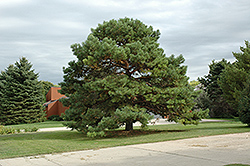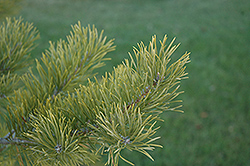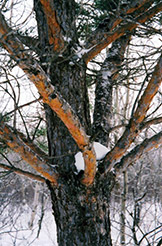Height: 50 feet
Spread: 26 feet
Sunlight:
![]()
Hardiness Zone: 2
Other Names: Scots Pine
Description:
A stunning evergreen tree, featuring peeling showy orange bark when mature; diverse habit of growth, ranging from open and artistic to a Christmas tree-like form; hardy, adaptable and very versatile, can be used as an accent, windbreak or shade tree
Ornamental Features
Scotch Pine is primarily valued in the landscape for its ornamental globe-shaped form. It has rich green evergreen foliage. The needles remain green throughout the winter. The shaggy orange bark is extremely showy and adds significant winter interest.
Landscape Attributes
Scotch Pine is an evergreen tree with a strong central leader and a more or less rounded form. Its average texture blends into the landscape, but can be balanced by one or two finer or coarser trees or shrubs for an effective composition.
This is a high maintenance tree that will require regular care and upkeep. When pruning is necessary, it is recommended to only trim back the new growth of the current season, other than to remove any dieback. Deer don't particularly care for this plant and will usually leave it alone in favor of tastier treats. It has no significant negative characteristics.
Scotch Pine is recommended for the following landscape applications;
- Accent
- Shade
- Windbreaks and Shelterbelts
Planting & Growing
Scotch Pine will grow to be about 50 feet tall at maturity, with a spread of 26 feet. It has a low canopy with a typical clearance of 5 feet from the ground, and should not be planted underneath power lines. It grows at a medium rate, and under ideal conditions can be expected to live for 80 years or more.
This tree should only be grown in full sunlight. It prefers dry to average moisture levels with very well-drained soil, and will often die in standing water. It is not particular as to soil type or pH. It is highly tolerant of urban pollution and will even thrive in inner city environments. This species is not originally from North America.


